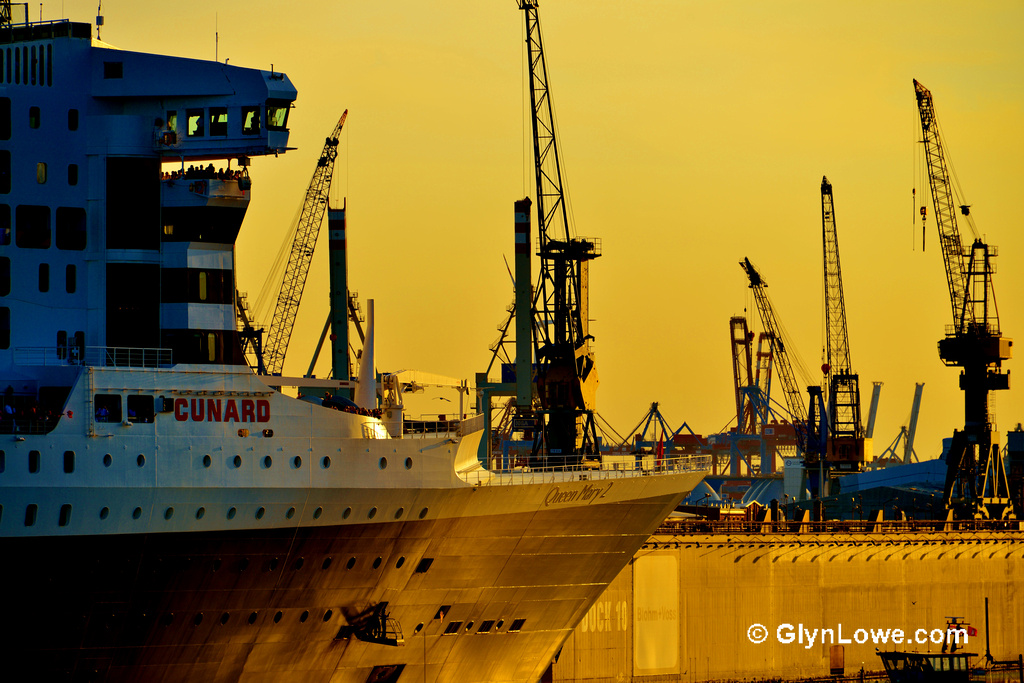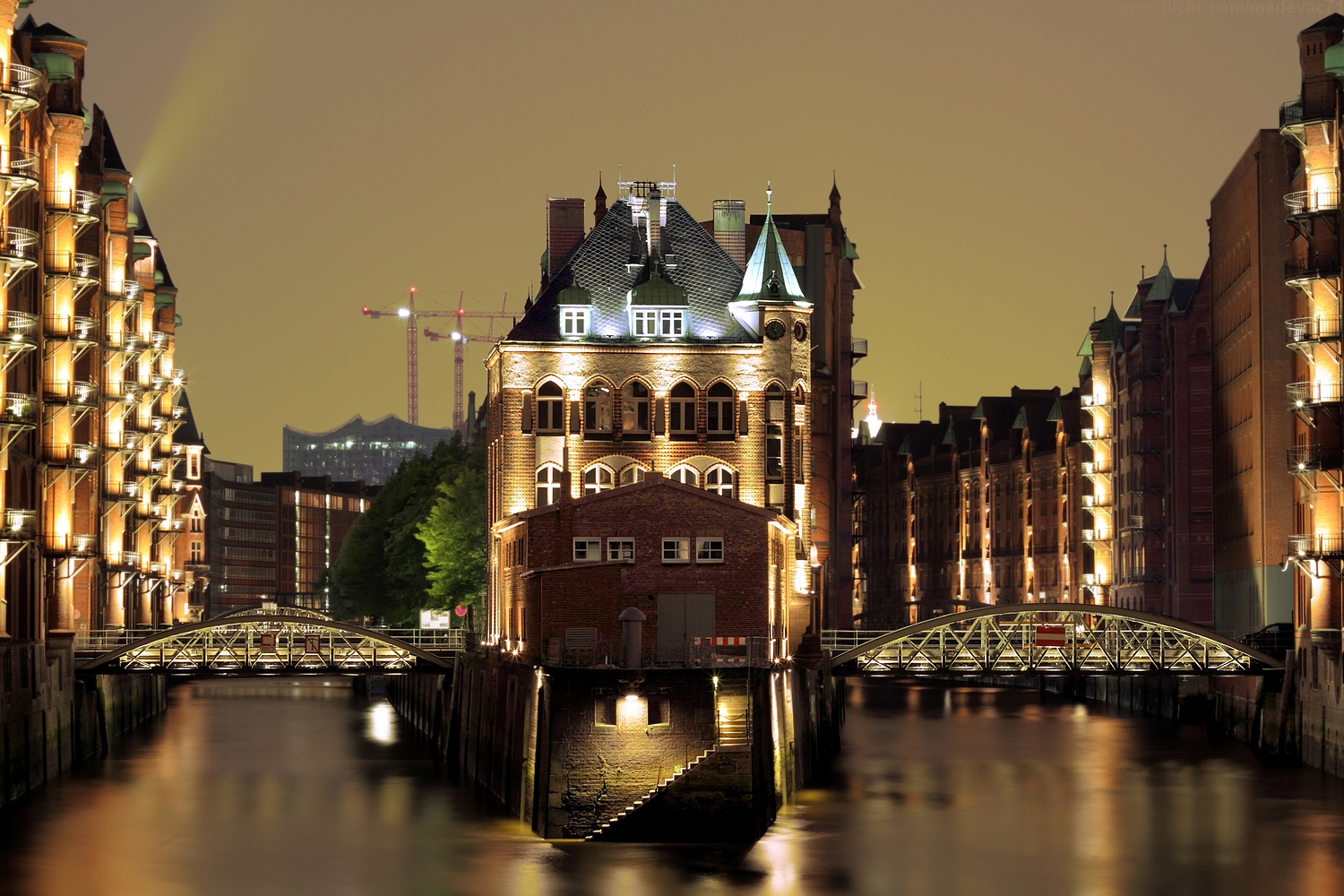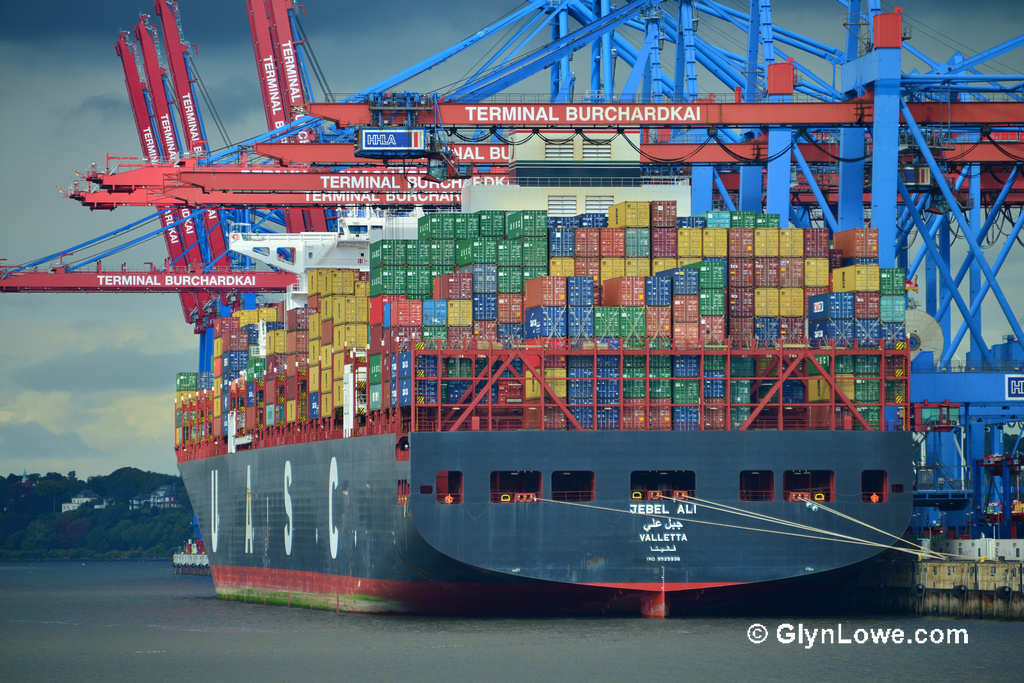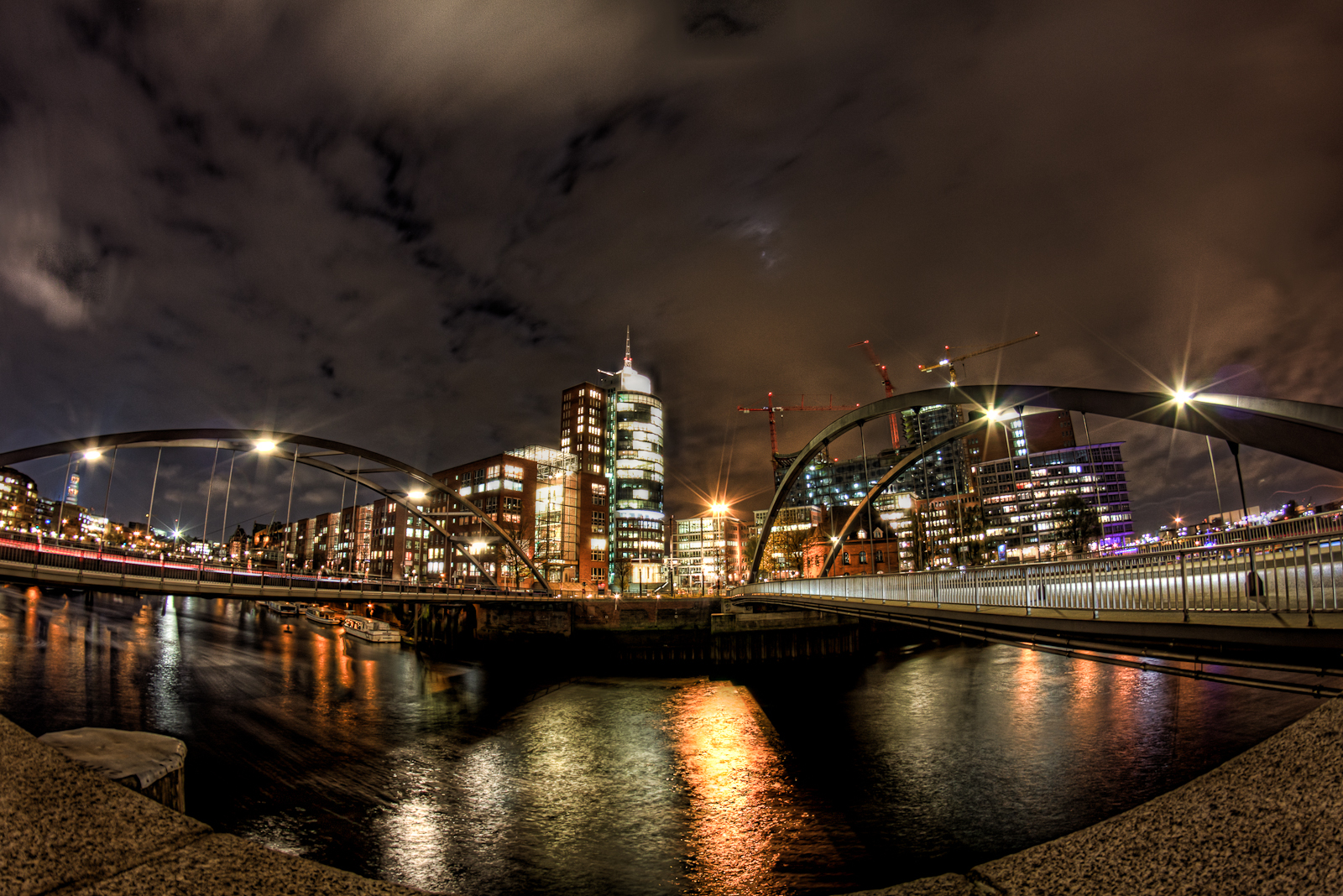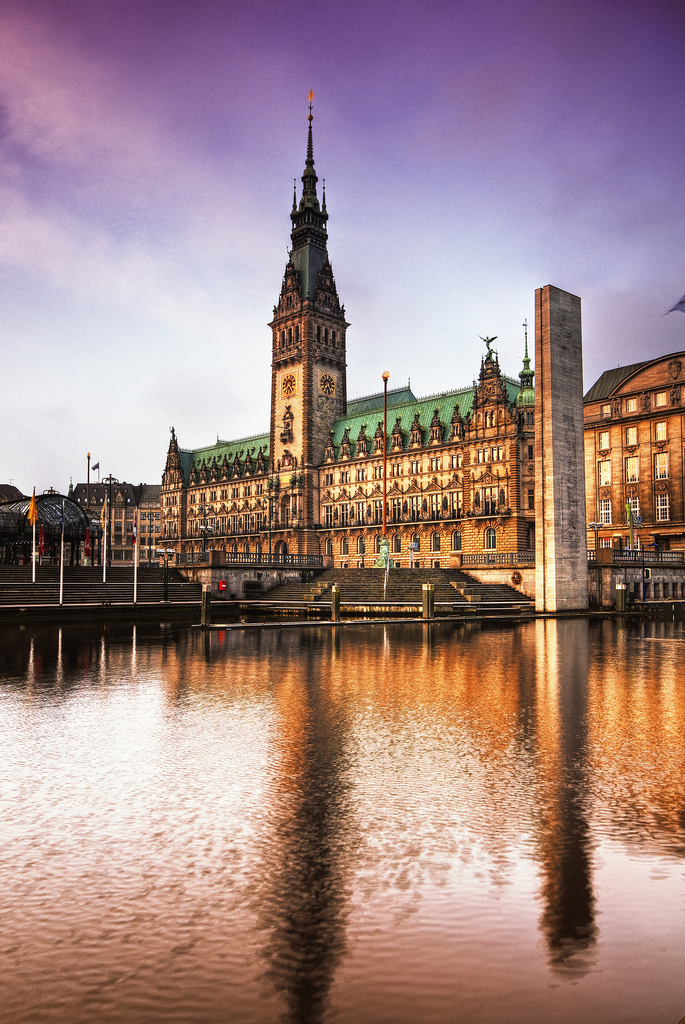Hamburg, a city with many dimensions and something for everybody, from culture, traditions, interesting architecture, world flair, different kinds of artworks, nature, high-class shopping, non-stop entertainment, beaches and a harbor. A perfect day in Hamburg starts with a harbor tour, then a little stroll around the historic city center and finds an interesting ending on the world-famous Reeperbahn. There are many ways to discover the fascinating flair of the traditional yet modern Hansa trading town of Hamburg. However it is always a good idea to start at the heart of the city, the harbor.
The harbor dates back to the 9th century as a modest 393.7 ft (120 meter) long boardwalk. However, the official birth of the harbor is May 7th,1189, this day is celebrated as the biggest harbor feast of the world with over 1.5 million attendees every year. Hundreds of national and international ships of every type of shape or form visit Hamburg at the beginning of May for the birthday celebration, Hafengeburtstag.
Hamburg has always had a special position among Hansa harbor cities, because it was the first city with a harbor connected to the western part of the world, even before the discovery of America. Over the years, the town entered into economic alliances with many other foreign harbor cities, which was against the rules within the Hansa, who only aloud alliances with german harbor cities. The boldness to build these foreign relationships helped earn the town respect and established a good reputation for trust in the rest of the world, thus the town grew quickly to become a vibrant, international city. By 1850 there was not one harbor in the world without hosting at least one ship with a Hamburg flag.
In 1888 the Hansa generated a free-port and build the Speicherstadt–still the largest connected bonded warehouse complex in the world. In 1913 Hamburg became the third largest harbor of the world, behind New York and London due to the rare combination of long, toll-free stock and the transaction of foreign goods.
But this quick and successful development also brought out the dark side of the city–pirates! Yes, there were pirates in the North Sea and the most famous and notorious one was Klaus Störtebeker. His legendary passing is still the story of nearly every tour in Hamburg. Legend says that Störtebeker and his crew, the Vitalienbrüder, were captured near Helgoland island. The pirate ship got stranded on a sandbar after the low tide came early that day due to a storm. On October 20, 1400 Störtebeker and his crew were to be executed in the Grasbrook district in Hamburg. To rescue his crew Störtebeker tried to bargain with the hangman. Everyone of his crew members should be saved from execution, when the pirate would be able to manage to walk by them, after he has been beheaded. All the stories end with the information that the beheaded pirate was able to walk by 11 of his crew members. Due to his bargain, those 11 pirates would have been spared from execution, if the officials of the city had not broken their promise. Everyone of the Vitalienbrüder were executed that day.
Today there is nothing to fear, you will not find pirates in the North Sea nowadays. In fact, the North Sea is one of the safest oceans of the world. Still, the city with the most bridges in Europe offers visitors an exciting and fascinating experience.
In 2002 Hamburg opened it’s newest container terminal–one of the largest and most modern container harbors in the world with a transaction rate of over 140 million tons every year. Since 2006 Hamburg also a new cruise terminal, this and the unbeatable location of the harbor is bringing more and more tourists to the city.
When one of these massive cruise ships enter the harbor, try to be near the View Point next to the Cruise Center. This is always a magnificent spectacle, especially when the Queen Mary 2 is floating up the Elbe. The people of Hamburg are quite fond of this British cruise ship and say Hamburg is the home port of the Queen Mary 2, that’s why she is always welcomed into the port with fireworks.
For the early birds it is pleasingly to visit the famous Fischmarkt (fish market) every Sunday at the Landungsbrücken. This historic market offers you more than just high-quality, fresh fish on the market, it is a bit like stepping back in time with the calls of the market crier and juggling. While you enjoy your fish-bun you can observe the sunrise over the water. On the other side of the harbor, workmen start harbor operations and you can witness how the gigantic container ships are loaded and unloaded. If you enjoy a more traditional type of ship, visit the sailing vessel Rickmer Rickmers or the Cap San Diego. Every saturday you can climb the rig to smell the salty sea breeze, combined with a spectacular view. In the evening you can also enjoy an amazing view of the illuminated city and harbor from the other side of the harbor, which can only be reached by ferry; this is also where the permanent musical The Lion King is located.
If you walk along the water, you come to the largest intra-urban construction project in Europe, Hafen City. Between the harbor and Speicherstadt arises a mixture of sailor flair and modern architecture. The new emblem of the city is the Elbphilharmonie concert hall and it embodies the soul of this new city district. Many shops and businesses welcome you to stroll and if you need a little break, you are at the best spot next to the many tiny canals. Follow these canals and you will find yourself in the historic district of Speicherstadt. This part of the city is characterized by all the red brick warehouses. Like the Italian city of Venice, the whole district was build on thousands of oak stakes over the water. One advantage of building a district in the middle of water is that the many canals between the buildings serve as a water street for all the ships, who can deliver goods directly from the North Sea.
Those canals pervade the whole city and bring maritime flair to the city center and suburbs. You can ramble along the waterfront, visit the buildings at the historic center–especially the city hall, which is the senate home of the city state–or climb the tower of the St. Michael’s church to enjoy the view over the city.
Around the countless canals, known as Binnenalster, are many green recreation and sport areas making you feel as if you are no longer in a city. Hamburg counts as one of Europe’s greenest cities and was elected as european capital of environment in 2011. The city combines modernity, tradition, water, nature and an urban-lifestyle. Besides the strategic location of the city, the unique architecture and landscape, the Hamburg people of are known for their cosmopolitanism and welcoming attitudes.
Visit Hamburg once and you will fall in love.
